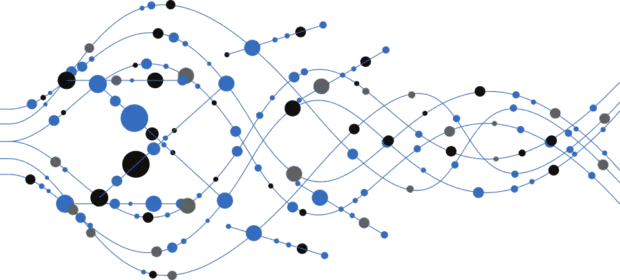Not infrequently users accustomed to rooting firmware, installing all sorts of system software, changing kernels and otherwise compromising firmware, find it for themselves that it is impossible install an OTA-update. It just won't get in place, rejecting…
CONTINUE READING 🡒 Learning heterogeneous parallelism in C++ with AMP
When it became physically impossible to further increase the number of transistors in a single microprocessor core, the manufacturers started to put several cores on a chip. This was accompanied by the emergence of such frameworks, that…
CONTINUE READING 🡒 Tempesta FW, a handfull firewall against DDoS attacks
DDoS attacks have become a real scourge of the modern Internet. They are countered by both organizational methods (we wrote about them in our magazine more than once) and technical means. The latter are usually either ineffective…
CONTINUE READING 🡒 Malware for OS X: Full Chronicle
The number of malware targeting OS X has been growing along with popularity of this operating system. Few expected it (good protection and the need of root privileges created a sense of security), but now you can…
CONTINUE READING 🡒 0-day attacks using “keep-alive” connections
Most of today's servers support "keep-alive" connections. If the pages have a lot of media content, such connection will help to substantially speed up its download. But we will try to use "keep-alive" for far less obvious…
CONTINUE READING 🡒 This is GameDev, baby! Interview with developers of World of…
How to serve a hundred million users without going nuts? What technologies to use? In what language, after all, to write the authorization for your future high load to make sure that everything is "like for the…
CONTINUE READING 🡒 Using synctool for server configuration management
The problem of managing a large number of systems is not new, but it has become particularly acute following the spread of clusters and cloud services. A variety of tools has been designed in order to solve…
CONTINUE READING 🡒 How to find vulnerabilities in routers and what to do…
Often, the manufacturers of routers do not particularly care about the quality of their code. As a result, the vulnerabilities are not uncommon. Today, the routers are a priority target of network attacks that allows to steal…
CONTINUE READING 🡒 Hackbook #197. Set up Cisco as server, SOP bypass for…
Set up Cisco as server, SOP bypass for Flash and other
CONTINUE READING 🡒 Oracle DB vulnerabilities: the missing pentester handbook
Today, I would like to discuss the attack vectors used at various stages against the Oracle databases: how to probe the database weaknesses from outside, how to gain a foothold inside and how to automate all this…
CONTINUE READING 🡒 7 non-trivial ways to hack your MySQL Database
MySQL is one of the most common database systems. Found everywhere, it is most likely to be used by numerous websites. Hence the reason why the security of this database is a very important issue. An attacker…
CONTINUE READING 🡒 Dive into exceptions: caution, this may be hard
Modern versions of OS impose security-based restrictions on executable code. In this context, the use of exception-handling mechanism in injected code or, say, in the manually projected image may become a non-trivial task, that is, if you…
CONTINUE READING 🡒 Welcome, Sails.js! The Missing Rails for Node.js
Let me tell you the truth. There is a true secret lodge of JavaScript fans in our magazine. As soon as we, including the chief editor, the managing editor, and yours truly, catch the sight of one…
CONTINUE READING 🡒 Full kit of a Security Officer for $100
Our goal is the carry-on gadgets that justly could be included in the usual of a hacker, a young-gun detective or an info security officer. Today we are going to talk about usage and modify of different…
CONTINUE READING 🡒 Complete guide for *nix backup solutions
Do you often make backups? Meanwhile, *nix systems have a lot of different backup tools, ranging from the smallest to huge packages for the enterprise sector. Each of these tools has its own features, each one has…
CONTINUE READING 🡒 Review of ROSA Fresh Desktop 4
The idea of NSP (National Software Platform) is debated on the government level in Russia. Among other things, such NNP would include ROSA Linux distribution, formerly known as Mandriva. Recently, a new version was released for one…
CONTINUE READING 🡒 Building weather station with STM32F3DISCOVERY and WizFi220 Wi-Fi module
Recently people have been using Arduino in their projects with increasing frequency, since it contains e.g. Ethernet or Wi-Fi shield. An entire computer is usually altogether superfluous in this context. In this article I will show how…
CONTINUE READING 🡒 Mobile backend for mobile hacker
Modern cloud services offer hackers potentially unlimited resources. For example, Amazon often uses WPA-brute-force for hacking. In 2011, a German expert Thomas Roth could already search half a million passwords per second paying 28 cents per minute.…
CONTINUE READING 🡒 Let’s learn the basics of build automation with the help…
Any software development project is always associated with the automation of related routine tasks. Initially, IDE and a pair of manual operations will be enough for you. Then, the number of body movements begins to grow: you…
CONTINUE READING 🡒 Why we need Google Chromecast and what it can do
Recently, media set-top boxes and HDMI-dongles are gaining popularity. This article is about the most well-known device of this series — Google Chromecast, which has a huge amount of various compatible applications and an open SDK. It…
CONTINUE READING 🡒 


















